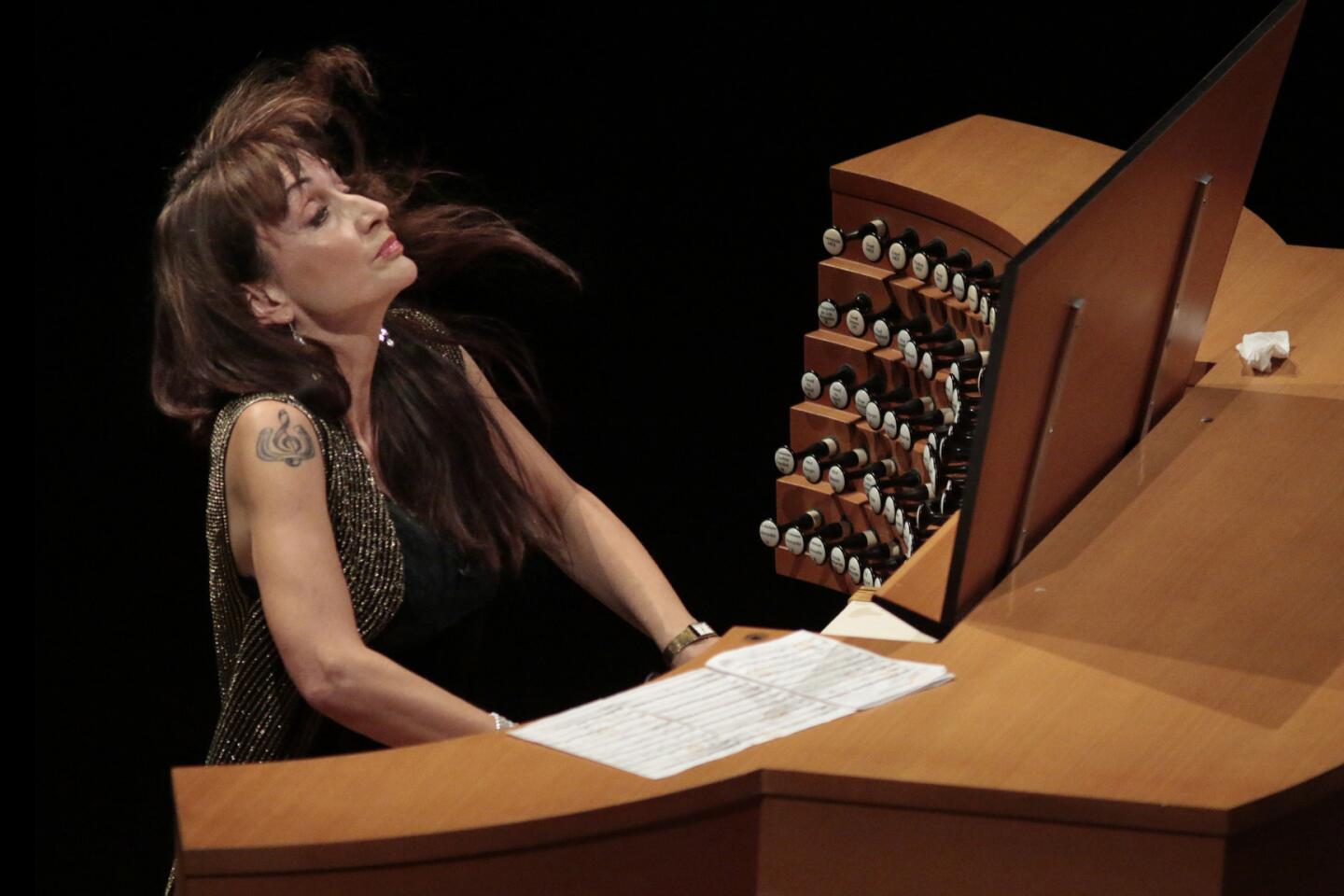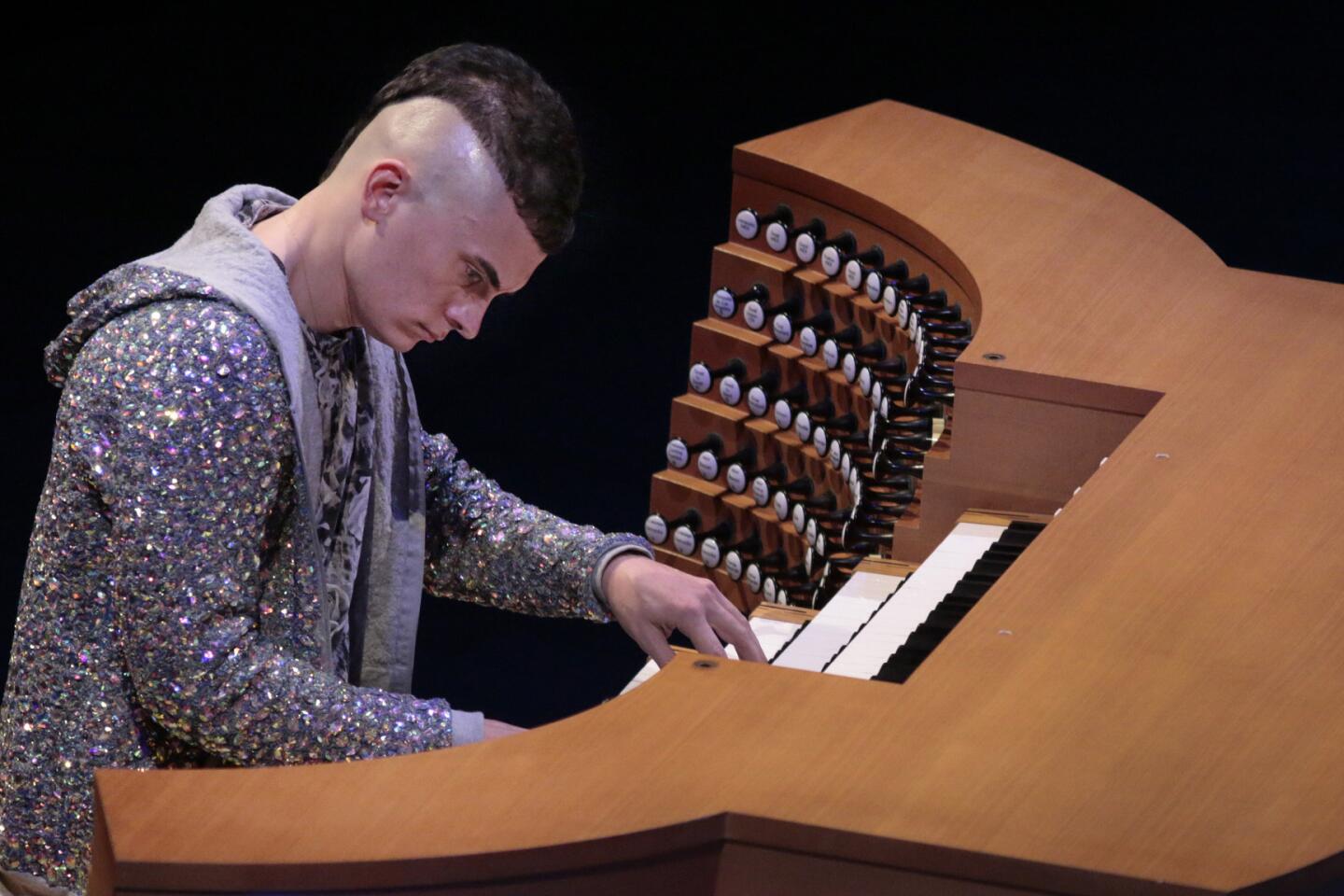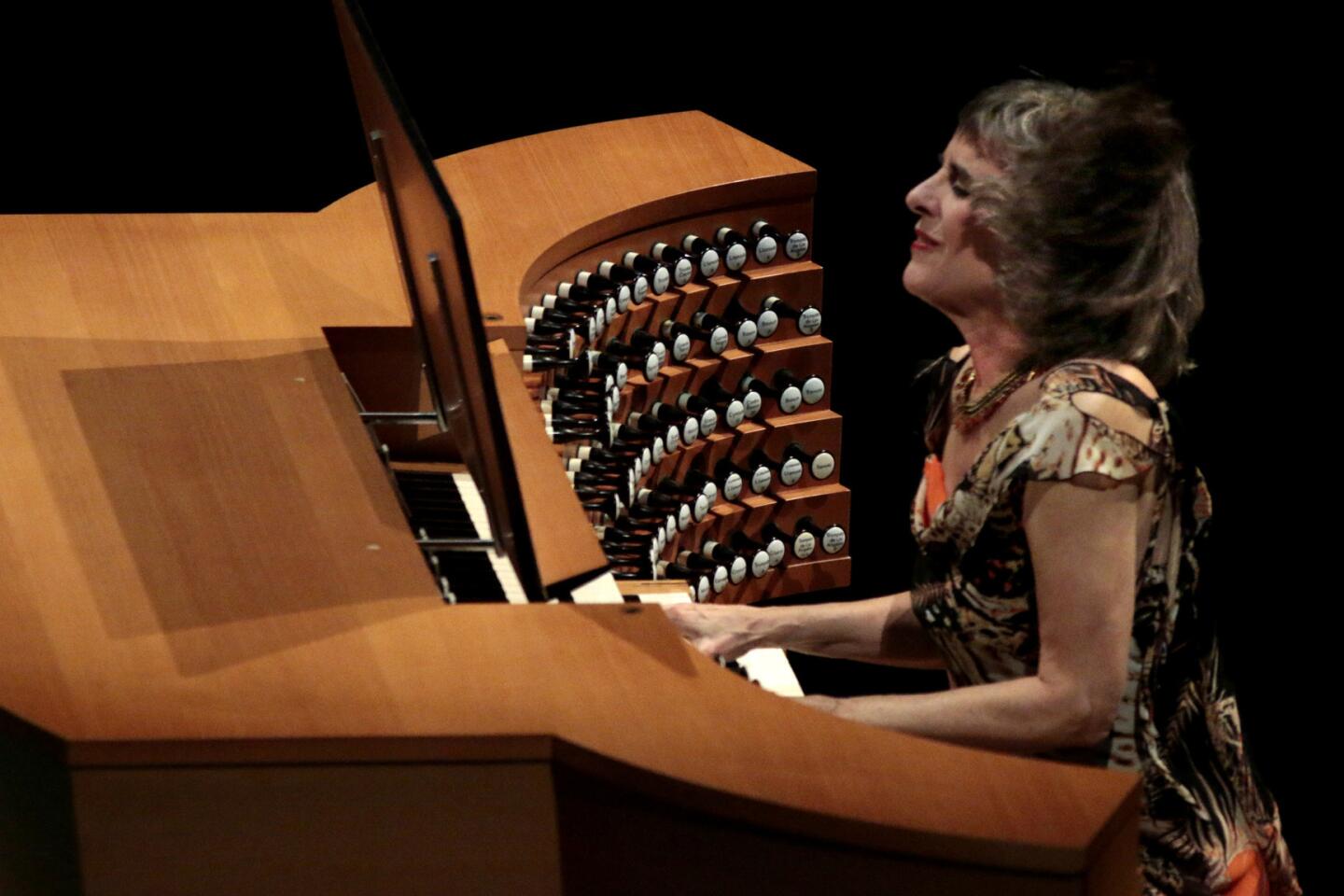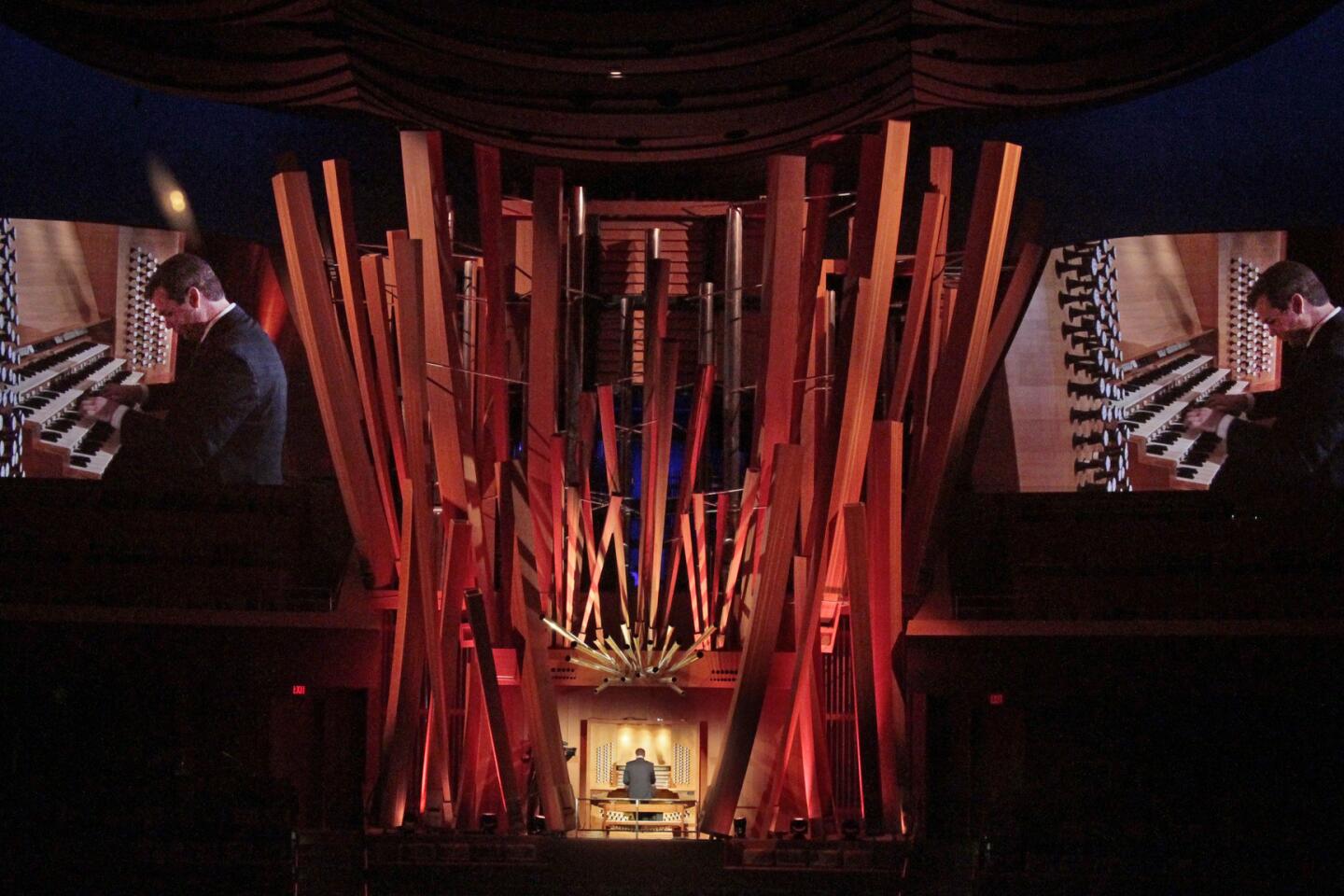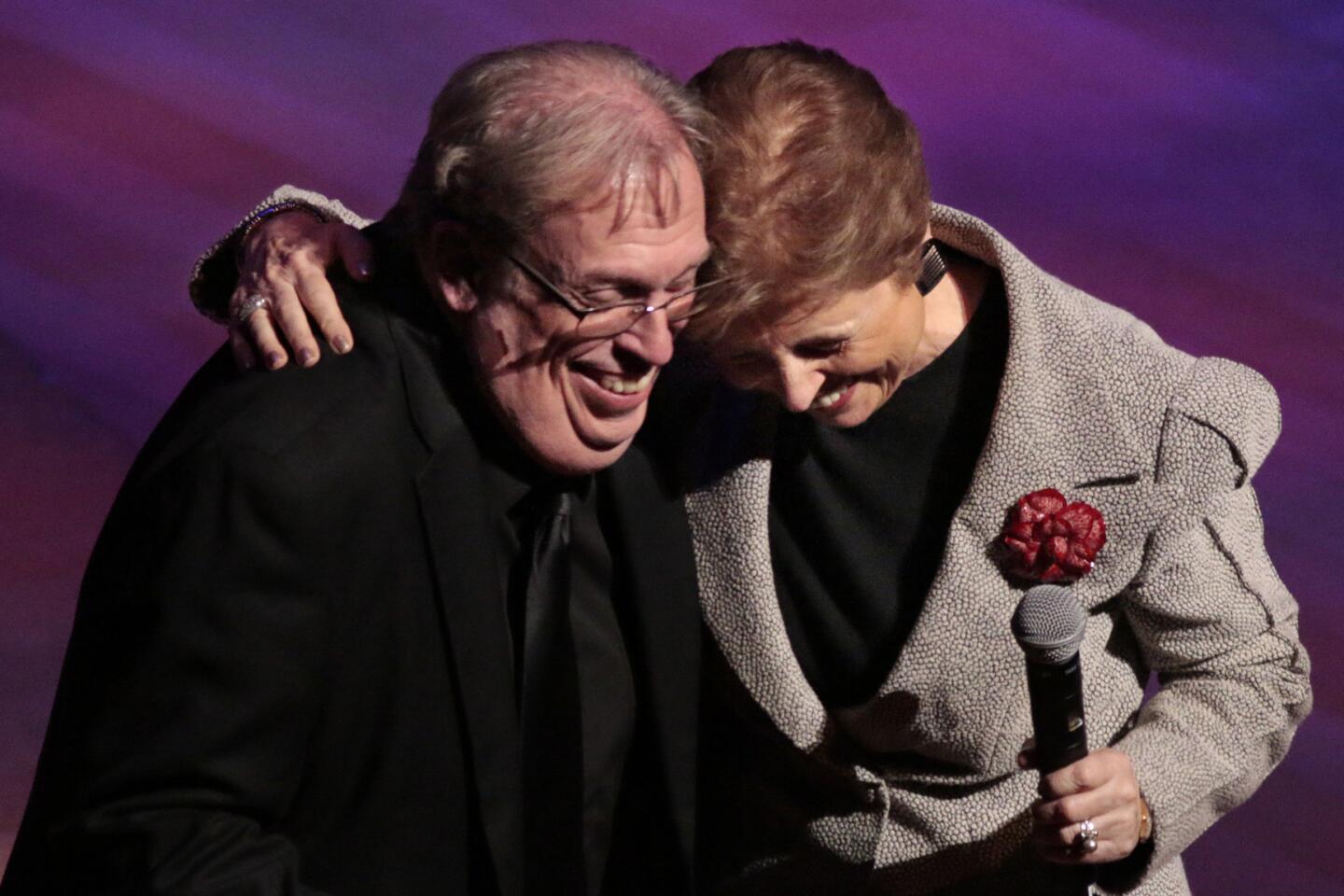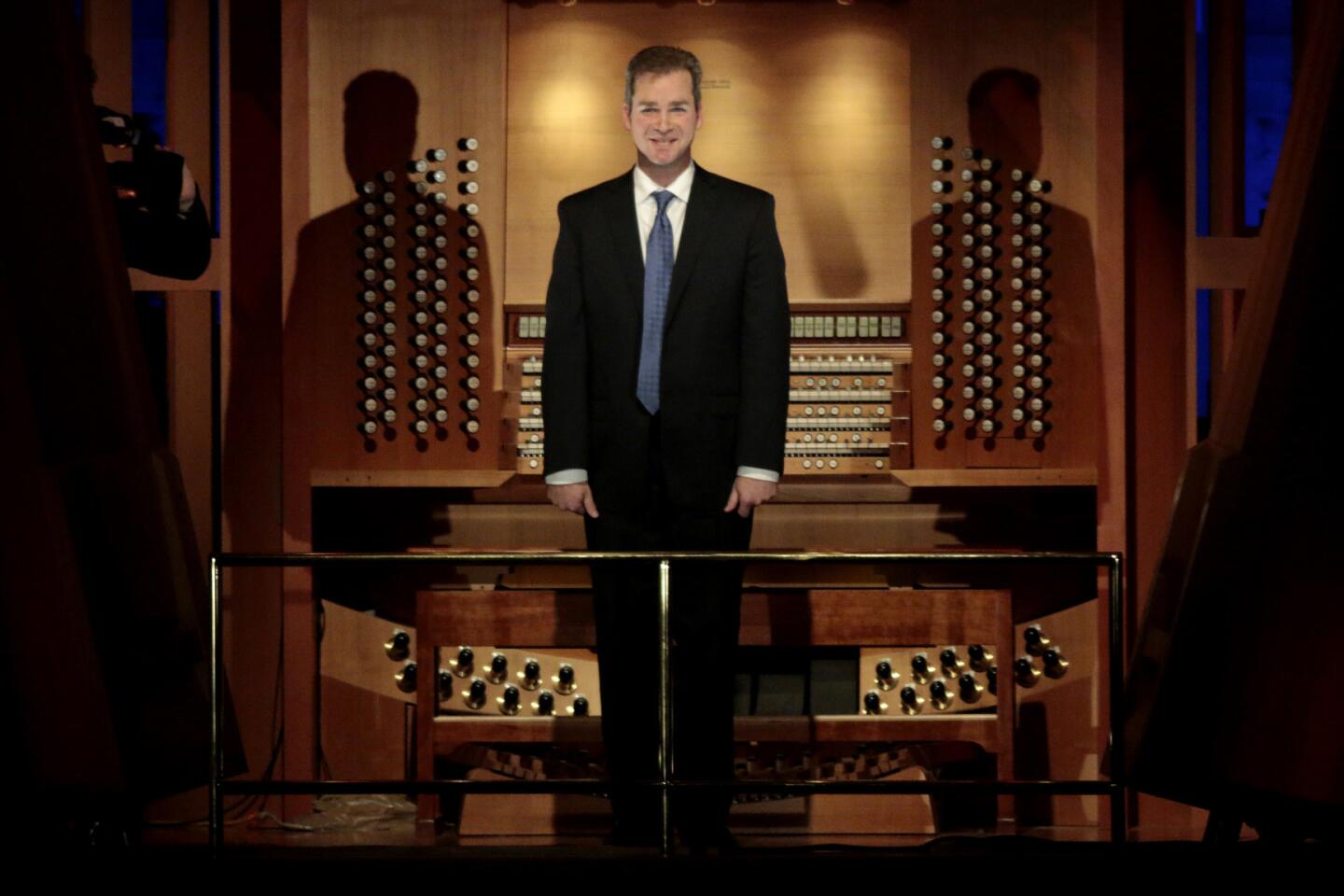The proof is in: The pipe organ is still the king of instruments
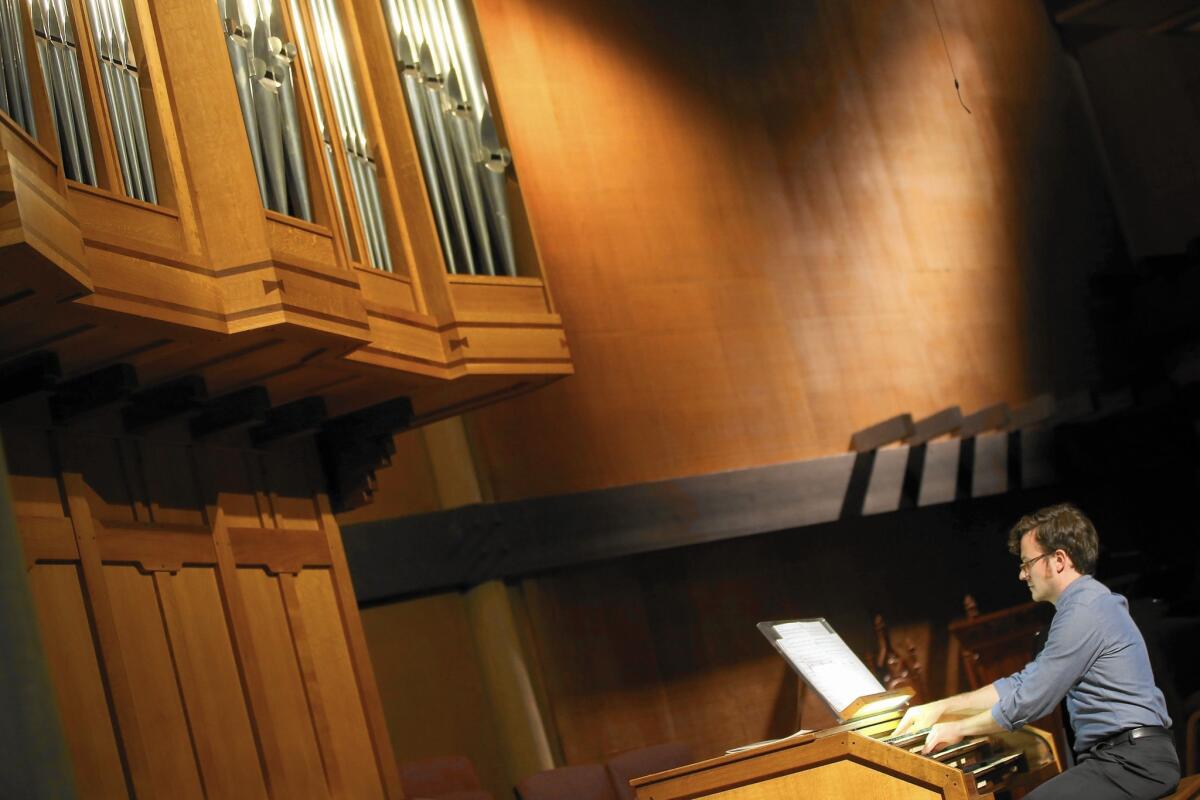
The organ — whether concert hall or church variety — has long shown signs of becoming an endangered species. Churches have been dumping their instruments for years, and for a while the organ became so unfashionable in concert halls that venues such as Royce Hall at UCLA and Alice Tully Hall at Lincoln Center in New York went out of their way to hide fine organs from view. Organ recitals are not plentiful. Electric keyboards are more to the liking of most young composers and have been for a half-century.
But don’t write off the king of instruments as a dinosaur just yet. A pair of very different recent organ recitals proved encouraging reminders that a great pipe organ’s immersive grandeur and vast color palette when heard in a winning space is a uniquely physical sonic experience that electronics in our age of virtual reality can’t come close to replicating.
Southern California, in fact, happens to contain surprisingly rich soil for organs, especially big ones. First Congregational Church in the Westlake neighborhood of L.A. boasts the world’s third-largest pipe organ; Crystal Cathedral in Garden Grove is in sixth place. San Diego’s Spreckels Organ Pavilion was the largest of all outdoor pipe organs until a competitive small town in Germany built a monster a few years ago, but new pipes are on the way to enlarge Spreckels and reclaim the record.
Our two newest major symphony halls — Walt Disney Concert Hall and the Renée and Henry Segerstrom Concert Hall — feature impressive organs proudly displayed as architectural enhancements, though underused. The Cathedral of Our Lady of the Angels, the downtown cathedral finished in 2002, would feel more cavernous than grand were it not for its splendid and inviting organ.
None of these great organs is neglected, exactly, but don’t expect to hear a Bach fugue or Messiaen masterpiece any day of the week. More often than not the organs are employed for their practical usefulness, whether part of a symphonic work or church service. Solo organ programs in concert halls and most churches are few and far between, but there are exceptions. Sooner or later, downtown’s burgeoning foodie scene will discover that, a short walk from Grand Central Market, the cathedral offers weekly lunchtime recitals every Wednesday. This week organist Samuel Soria will use the occasion to demonstrate the church’s thrilling instrument.
The first of two recitals last week was a program of contemporary organ works played by Richard Valitutto at Neighborhood Unitarian Universalist Church in Pasadena. Meanwhile, at Disney, Thomas Trotter was on hand for the third program in this season’s four-concert Los Angeles Philharmonic solo organ series.
The good news is that both concerts were really good and for opposite reasons. More good news is that Trotter drew a healthy-sized (if not altogether healthy, considering all the coughing) crowd. The bad news is that hardly anyone showed up for Valitutto even though his program was the newsworthy one.
Then again, Valitutto, one of the busiest and most versatile pianists in town (a member of wild Up and gnarwhallaby, sometime harpsichordist, sometime composer and all around go-to new music specialist) is no organist. This was his first public organ recital. He avoided fancy footwork and was not extravagant in his use of the stops to produce crazy timbres. His motivation, he told the few on hand, was to play Morton Feldman’s “Principal Sound,” the revered American composer’s only organ piece.
Written in 1980 and inspired by the midcentury church organs, it is, for no understandable reason, a considerable rarity in the U.S. The three relatively obscure recordings of the work were made in Germany and Sweden after Feldman’s death in 1987. Yet so important is this piece that a four-day Feldman festival in London that ended Monday was called “Principal Sound.”
Neighborhood church is a marvelous place for Feldman, an intimate Craftsman room with an organ just large enough to fill a listener with sound but not overpower. The score is meditative, as Feldman’s late music was, a sonic braid of repeated ever-so-slightly changing patterns.
Feldman was fascinated by the organ’s principal pipes that produce the thickly textured diapason sounds that are pure organ, as opposed to the myriad other pipes with, say, flute-like or brass-like characters. Feldman slowly dissects the principals’ sound, with crunchy dissonances and luminous consonances, swelling and receding in a 25-minute quirky parade, which Valitutto handled with a measured, majestic grace that the German and Swedish organists miss on disc.
For the rest of the program, Valitutto offered unusually and not unwelcome modest applications of the organ in works written since Feldman’s piece. For Alfred Schnittke’s gloomy, atmospheric, haunting “Schall und Hall,” the organist was joined by trombonist Matt Barbier. In Eric Shanfield’s “Scenes From the Life of Boullée, Book 1,” the organ supplied a Minimalist accompaniment to four poems by John Yau sung with alluring attention to the character of each word by Justine Aronson. Klaus Lang’s “marias mantel” stayed the course with long drones. Valitutto’s own “mob(i)le with reflect(x)ion” investigated chords.
Trotter’s Disney recital was, on the other hand, that of a virtuoso in action. The program was a likable exhibition of mostly display pieces, played with an ideal balance between clarity and bravura. The disappointment was a lack of musical ambition.
Trotter began with a brilliant performance of Bach’s Toccata and Fugue in F, BWV 540. But then it was a little bit of this and that — some Mozart for mechanical organ, two short Schumann fugues, the first movement from Widor’s Fifth Organ Symphony.
The one recent work — Jonathan Dove’s “The Dancing Pipes,” written for Trotter two years ago — was happy and ended loud but lacked adventure. Trotter’s organ arrangement of Dukas’ “The Sorcerer’s Apprentice” was clever and fun, but no more so than the famous original score. Liszt’s Fantasia and Fugue on B.A.C.H. blew the roof off as it too often does.
A good man in the fight for the cause of the organ, Trotter was superbly engaging and musical with everything he touched. But this magnificent beast of an instrument must be cared for in its majestic natural habitat — a repertory of important pieces played in full — or it might become truly imperiled.
------------
Samuel Soria organ demonstration
Where: Cathedral of Our Lady of the Angels, 555 W. Temple St., Los Angeles
When: 12:45 p.m. Wednesday
Admission: Free
Info: (213) 680-5200, www.olacathedral.org
More to Read
The biggest entertainment stories
Get our big stories about Hollywood, film, television, music, arts, culture and more right in your inbox as soon as they publish.
You may occasionally receive promotional content from the Los Angeles Times.

